Huggingface Model Deployment
Deploying Language Model Models (LLMs) on TrueFoundry is much easier than the method below via Model Catalouge.
Model Catalouge offers robust defaults derived from extensive hyperparameter testing, ensuring a streamlined deployment without the need for additional experimentation.
Use the guide below in case your desired model isn't in the catalog.
Learn how to use Model Catalouge via the following documentations: Deploy an LLM and Interact with your LLM
What you'll learn
- How to Deploy a Hugging Face Model as a Model Deployment via Truefoundry User Interface.
After you complete the guide, you will have successfully deployed a hugging face model. Your model deployment dashboard will look similar to this:
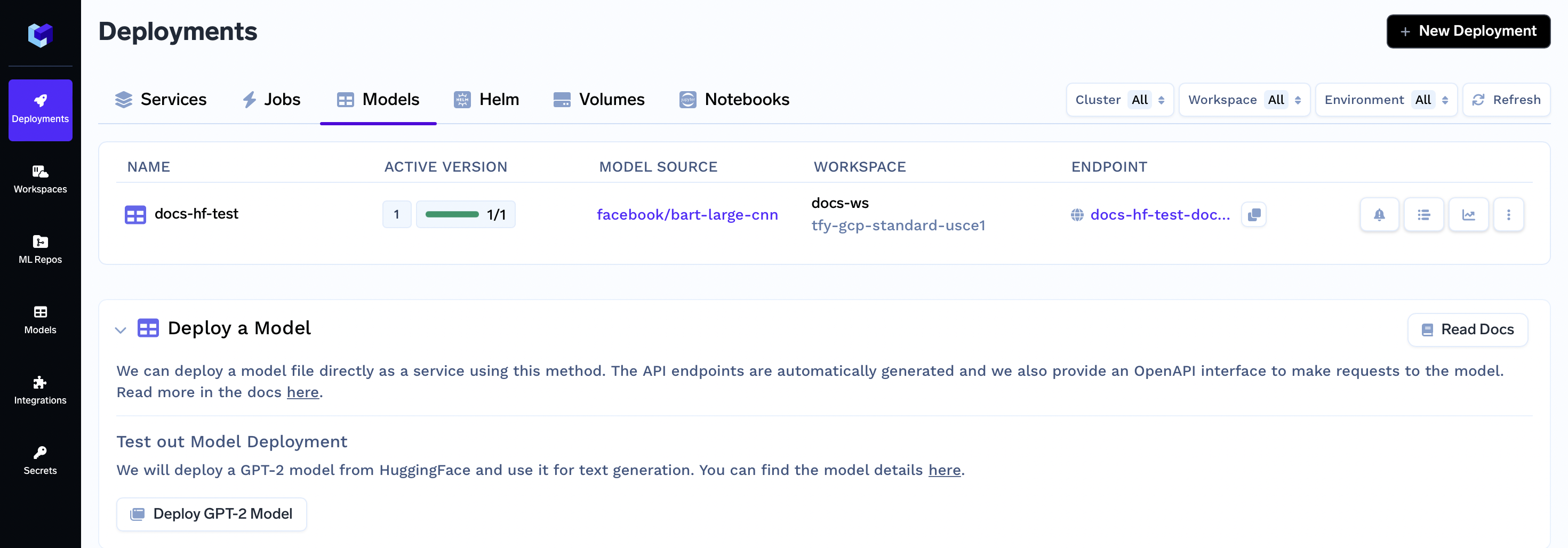
Deploying your Huggingface model
Step 1: Get the model details
Before you initiate the deployment, you need to gather essential details about the Hugging Face model you want to deploy. For this example, we will be deploying the BART-Large CNN SamSum model.
In general for the models you want to deploy you will need to get their model-repository-name and pipeline.
Step 2: Initiating Deployment via UI
- On the left panel of the TrueFoundry user interface, locate and click on the "Deployments" tab. From here, navigate to the "Models" tab located in the top bar.
- Click on the "New Deployment" button, and a form will appear with various deployment options. Click on the "Model" button to select job deployment (will be pre-selected)
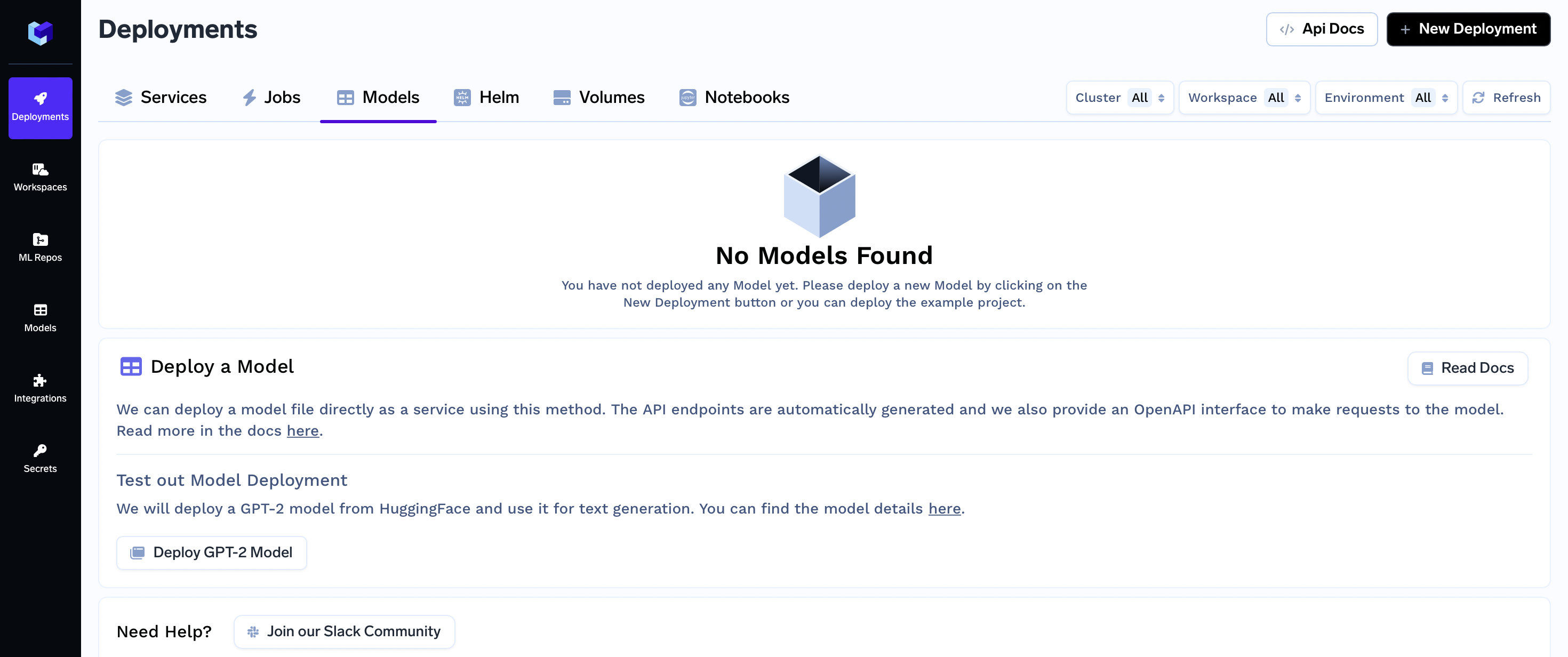
- In the same form there will be a field "Where would you like to deploy?" option. Click on the "Search Workspace" bar, and select the desired workspace for your deployment.
Note:
If you don't have any workspace right now, you can create a new workspace by clicking the Create New Workspace link and following along this Documentation or contact your cluster admin in case of some issues
- Once selected click on the "Next Step" button to continue with the deployment.
Step 3: Configure Deployment
Now, let's dive into the configuration options for your deployment form. Each of these options plays a crucial role in shaping how your job is deployed and executed.
We will not only explain these options to you but also provide clear instructions on what to fill in each field to ensure a seamless deployment process.
Name:
The Name field allows you to assign a unique identifier to the job within your workspace.
Name:
hf-deploy
Model to Deploy (Truefoundry model registry or Huggingface model hub):
The Model to Deploy option lets you specify whether you want to deploy a model from TFY model registry or deploy a model from HF model hub
Choose "Huggingface model hub"
Model Library:
transformersModel repository name:
facebook/bart-large-cnnPipeline:
summarization
Resources
Allocate computing resources (CPU, memory, storage) for your model using the Resources option.
- CPU refers to the computing power available to your application
- Memory refers to how much space your application has to hold and work with data while it's running
- Ephemeral storage is where your application can temporarily store files and data
Requests and Limits:
- Request is like asking for a certain amount of a resource. It's what your application initially asks for to start working properly.
- Limit is like setting a maximum value. It restricts how much of a resource (like CPU or memory) your application can use.
So for each category of resource you specify the Request and Limits
CPU-REQUEST: 3
CPU-LIMIT: 3
MEMORY-REQUEST: 4000
MEMORY-LIMIT: 6000
STORAGE-REQUEST: 3000
STORAGE-LIMIT: 4000
Step 4: Submit the form
Now that all the deployment options are filled, you can proceed by clicking the "Create" button. This will initiate your deployment process. After clicking "Create," your Models Dashboard will resemble the following:
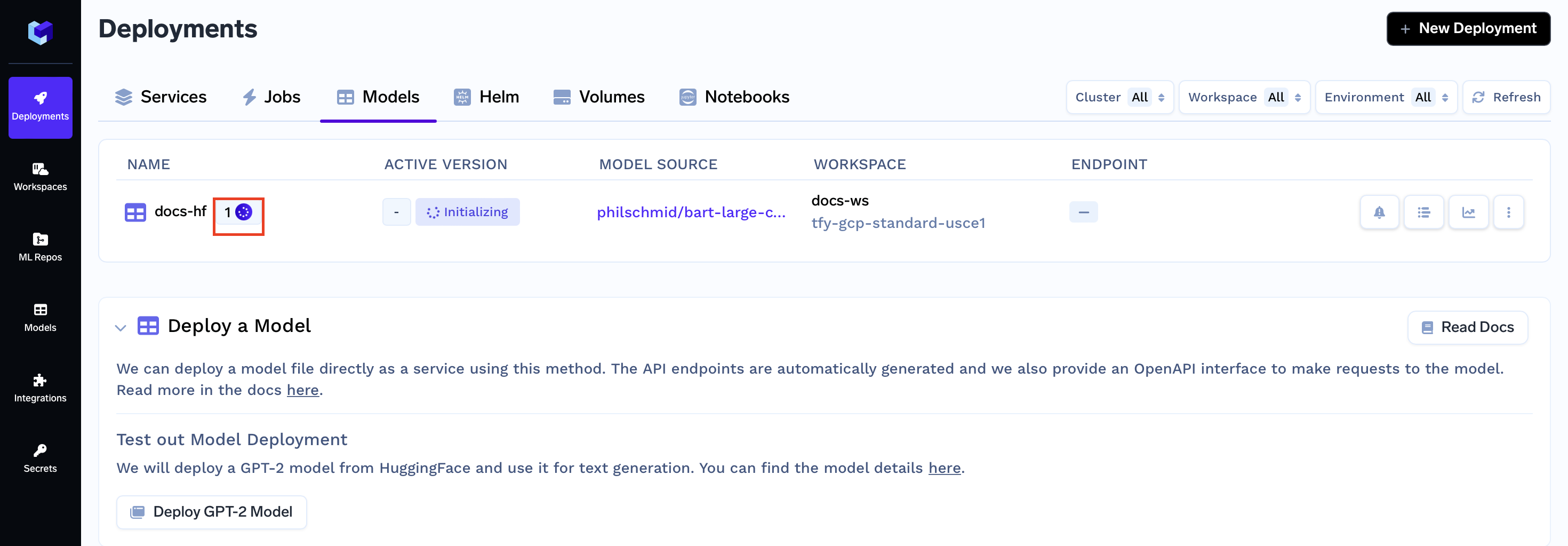
While your deployment is in progress, you can hover over the spinner icon to check the status of the deployment. After a brief moment, the deployment should become active, and your Models Dashboard will transform to appear as follows:

Interacting with the model
OpenAPI Spec
To make the process of making the requests easier you can go to the OpenAPI tab and click on the Infer Simple button

Here you can directly try out your model via the changing the body and hitting the Send API Request button.
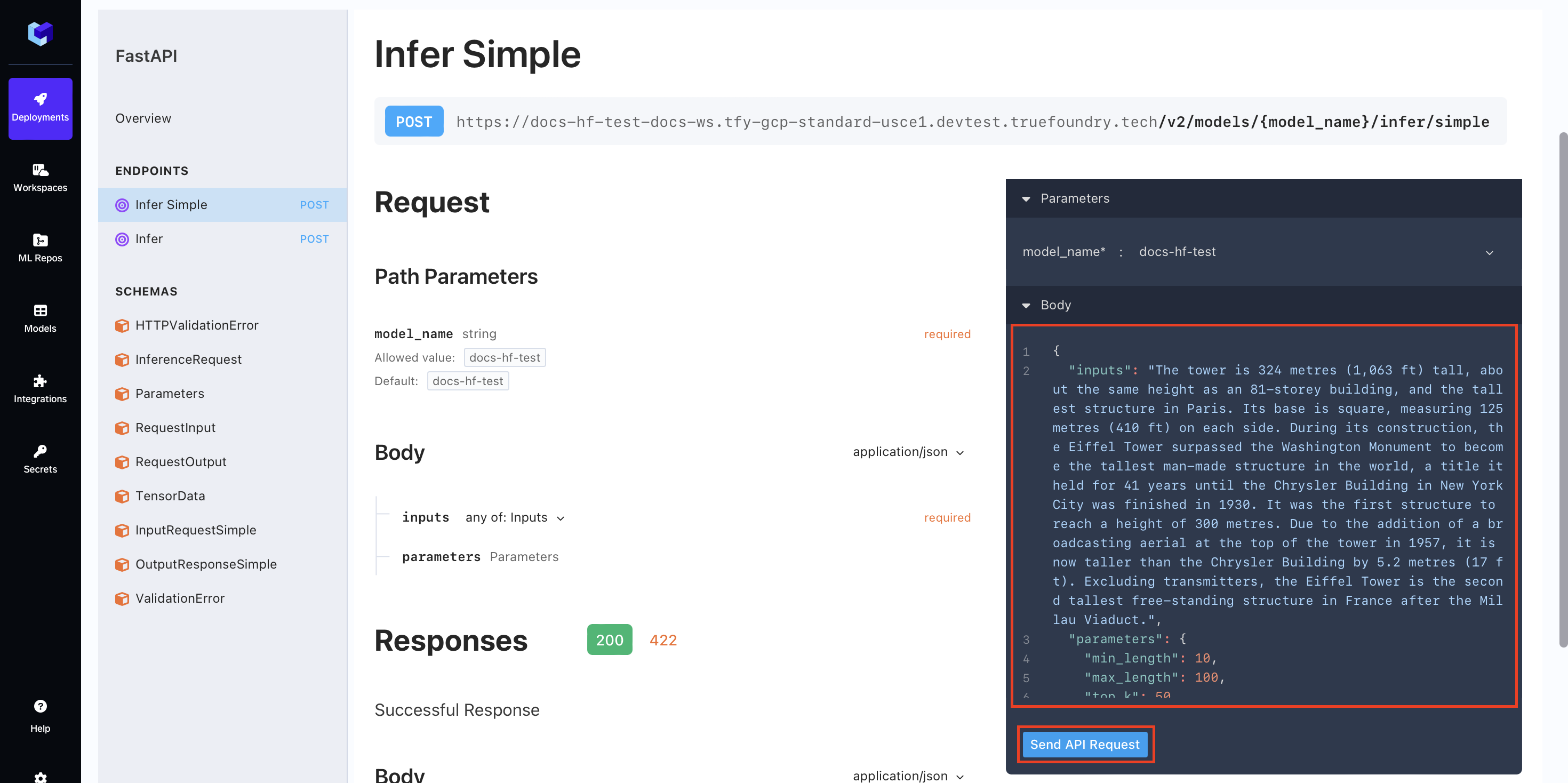
Once you hit the button, in a few seconds you will be able to see the response of your model.

Monitoring Model Metrics and Logs
You can see the logs and metrics of your Model via the button in the Topbar of your Model dashboard

You can now see the logs and metrics of what happened when you made the request

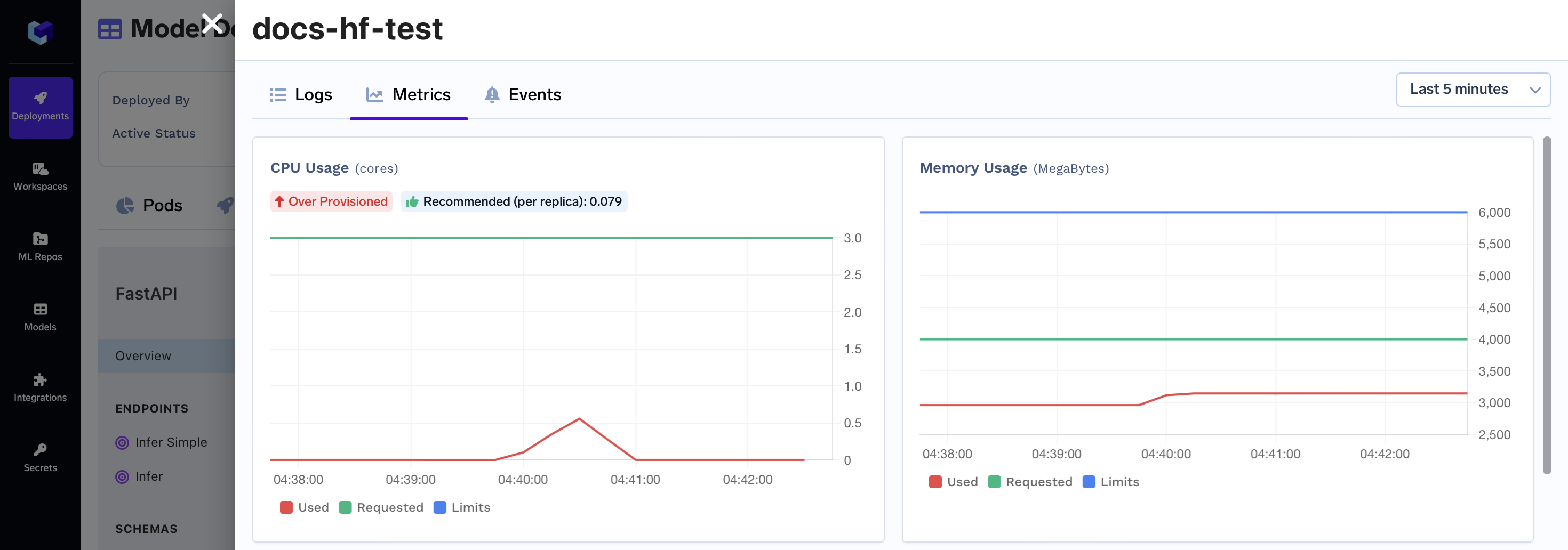
Code Snippet
You can scroll down to get code snippets on how to programmatically send requests to your deployed model.
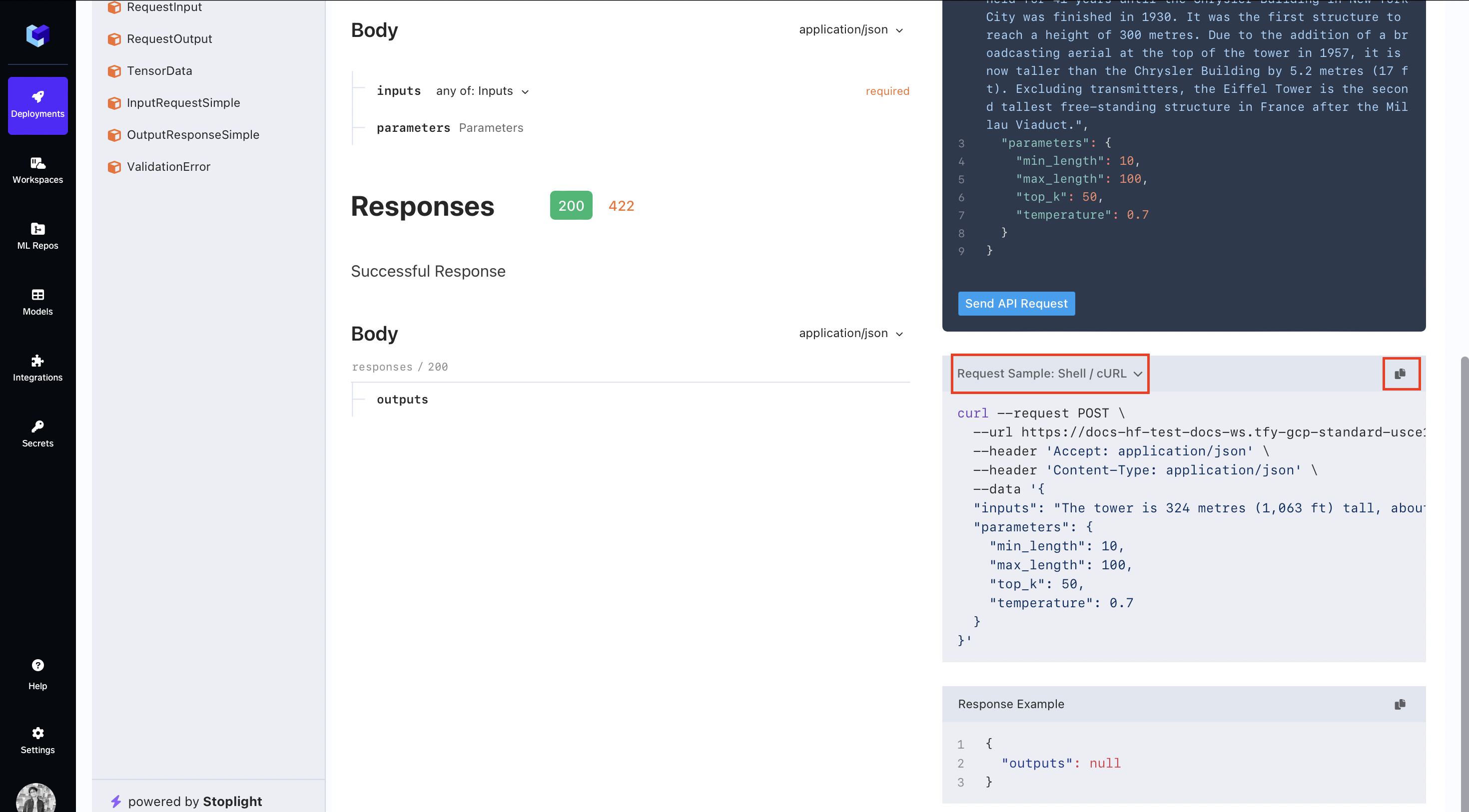
Updated 11 months ago